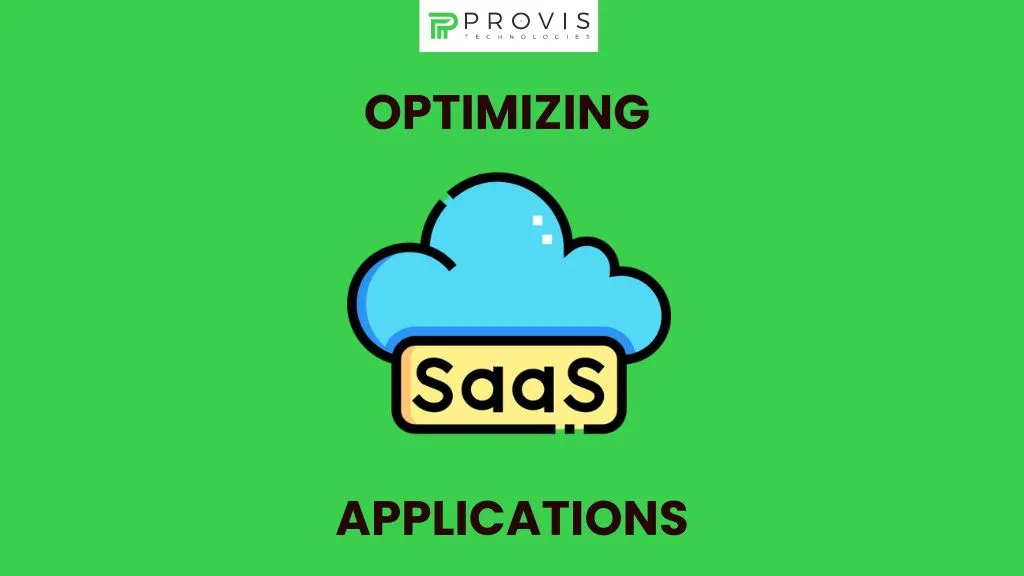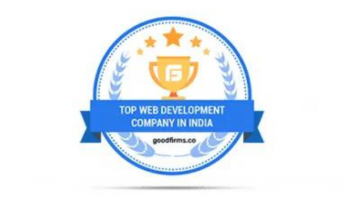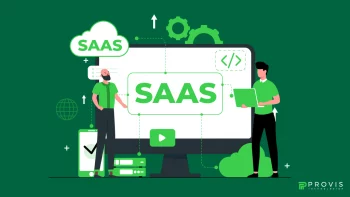We all know that Software as a Service (SaaS) is a gift to the tech world. Its game-changing abilities have become the reason for success for many businesses. The reason is that SaaS offers scalable, flexible, and cost-saving solutions to fulfill business requirements without upfront costs. SaaS applications are expected to play an even more pivotal role in 2025. And you must know that optimizing SaaS applications is essential for the cloud. This article will explore the key strategies to ensure your SaaS applications perform excellently in the cloud space in 2025.
SaaS Stats
Global SaaS Market Growth
According to Fortune Business Insights, the global SaaS market is expected to touch the $225 billion mark by 2025. India, U.S., U.K., and Germany are the key players in the SaaS industry.
Encryption Concerns in SaaS
Security is a growing concern for SaaS businesses, especially regarding encryption. Approximately 38% of agencies are worried about how their data is encrypted and managed by their service provider, while 37% express concerns about managing encryption keys locally.
Regional Growth Trends
Some countries are seeing exponential growth in their SaaS markets. For instance, Germany’s SaaS sector is expected to grow almost threefold from €6.85 billion in 2020 to €16.3 billion by 2025. Similar trends are observed in other European markets. This tells the potential of SaaS.
These statistics illustrate the rapid growth of SaaS, the security challenges it faces, and its expanding global footprint.
Don’t Miss:- How to Develop a SaaS Application? | The Complete Guide
Why Optimizing SaaS for the Cloud Matters?
The above stats lead us to this question – why does SaaS optimization matter? You know that cloud computing offers advantages like scalability, flexibility, and reduced costs. However, you must also know that simply moving a SaaS application to the cloud without optimization can lead to inefficiencies. Poor performance, higher operational costs, and security vulnerabilities are just some of the potential challenges that may arise without optimization. But when you optimize SaaS applications for the cloud – it unlocks the full potential of your cloud infrastructure. Then, it delivers you better services with lower expenses & improved customer satisfaction. That’s why optimizing SaaS applications for the cloud is a must. Don’t forget it!
Strategies for Optimizing SaaS Applications
Cloud-Native Architecture
One of the first steps that you should take in optimizing SaaS applications for the cloud is adopting a cloud-native architecture. Traditional applications, built for on-premise environments, often struggle to take full advantage of the cloud’s flexibility. But when you re-architect your SaaS app and make it cloud-native, you enable its maximum benefits.
Key cloud-native principles include:
Microservices Architecture
What do you do? You break the application into smaller, independent services that can be deployed, managed, and scaled independently. This improves agility and allows for easier scaling when demand increases.
Containers
You should use containerization technologies like Docker & Kubernetes. Containers make it easier to deploy and manage microservices while ensuring consistent performance across different environments.
Serverless Computing
For certain functions, serverless computing can reduce costs & simplify management. Serverless platforms, such as AWS Lambda or Azure Functions – allow you to run code only when triggered. This minimizes resource consumption.
Related Blog:- Everything You Need to Know about SaaS E-commerce Platforms
Auto-Scaling for Efficiency
We know that one of the biggest advantages of the cloud is the ability to scale resources dynamically. When you allow your SaaS app to auto-scale, you make sure your resources adjust automatically based on the demand. During peak times, the system can scale up to handle the increased load, and during off-peak times, it can scale down to save costs. All of it happens automatically – all you need to do is optimize your SaaS app and active auto-scaling. Optimizing auto-scaling also gets you demand patterns in advance. Modern cloud platforms use machine learning to analyze usage patterns, which means you can prepare for anticipated spikes in traffic.
Cost Optimization & Cloud FinOps
Do you know as SaaS businesses scale and increase cloud usage, costs can quickly spiral out of control if not carefully managed? This is where Cloud FinOps comes into play. Cloud FinOps combines finance, operations, and development teams to optimize cloud spend without sacrificing performance. You must adopt FinOps practices to only pay for the resources your app uses. This is one of the most important things to keep in mind for optimizing SaaS applications for the cloud.
Cost optimization techniques include:
Right-Sizing Resources
You should analyze the current usage and adjust resource allocations to fit the needs precisely. For instance, if your SaaS application uses a large instance but only requires moderate resources, switching to a smaller instance can lead to significant savings.
Reserved Instances
Cloud providers like AWS, Azure, and Google Cloud offer discounts for reserving instances over some time. If you know your business will need certain resources for an extended period, this can help cut costs.
Monitoring Unused Resources
You should also regularly monitor cloud usage to identify unused or underutilized resources, such as idle virtual machines or storage volumes. Remember deleting or resizing these resources can lower costs without impacting performance.
Improving SaaS Application Performance
How can we forget performance optimization? It’s indeed very important. Latency, downtime, or slow response times can hurt the business badly, right? They affect user experience and reduce customer retention. To avoid such things, you can adopt the following performance optimization strategies:
Content Delivery Networks (CDN)
If your SaaS application has users across different geographic locations, consider using a CDN like Cloudflare or AWS CloudFront. CDNs cache content closer to users – which reduces latency and improves load times.
Database Optimization
You must know cloud databases need regular tuning to deliver optimal performance. Techniques like query optimization, indexing, and using in-memory databases (e.g., Redis or Memcached) can significantly boost the speed of your application’s database operations.
Caching
Caching mechanisms at various layers of the application can reduce redundant database calls and improve performance. Cache frequently accessed data in memory and reduce the load on your primary database.
Load Balancing
You can also use load balancers to distribute incoming traffic evenly across multiple servers or instances. This will make sure no single instance gets overloaded and will improve both performances.
Must Know:- 30 FAQs About SaaS Product Development
Strengthening Security for SaaS Applications in the Cloud
Even today, security remains a top concern for cloud-based SaaS applications. Because cybersecurity threats are getting more sophisticated, Your cloud infrastructure must be able to handle these challenges.
Here are some security strategies:
Multi-Factor Authentication (MFA)
Require MFA for users and administrators to reduce the risk of unauthorized access.
Encryption
It makes sure that data is encrypted both in transit and at rest. Cloud providers offer built-in encryption tools, but it’s essential to enable and configure them correctly. Do it!
Regular Security Audits
You must schedule regular security audits to identify vulnerabilities in your SaaS application. Tools like AWS Trusted Advisor or Azure Security Center provide built-in security recommendations for cloud applications.
Compliance
Also make sure your SaaS application complies with relevant regulations (e.g., GDPR, HIPAA, or PCI DSS). Cloud providers offer tools to help meet compliance standards, but you need to configure your application accordingly.
Bottom Line
Optimizing SaaS applications for the cloud is needed for businesses that want to remain competitive – it has become clear with this. You can fully harness the power of the cloud while delivering exceptional performance to your customers using the strategies mentioned above. Your approach to cloud optimization will keep your SaaS app at its peak performance. Also, if you need any help with SaaS app development or support – connect with Provis Technologies.
FAQs
What is the global SaaS market forecast for 2025?
The SaaS market is expected to grow to $225 billion by 2025 – doubling from $108.4 billion in 2020.
Why is optimization a concern for SaaS businesses?
Increasing security challenges and other reasons make optimization of SaaS applications necessary.
How can Provis Technologies help with SaaS solutions?
Provis Technologies provides secure and scalable SaaS solutions tailored to your business requirements. Provis Technologies has the required experience and proven track record needed for client growth and data protection.
Written By
Author's Picks
- The Future of E-commerce: Embracing SaaS Solutions
- 15/04/2024
- Knowing SaaS to the Core & a Complete Guide to Best SaaS App Development Methods
- 20/01/2024
- How to Develop a SaaS Application? | The Complete Guide
- 05/09/2024
Categories
- AI for Startups
- AI in Web Development
- AI Integration
- AI Platforms
- AI Prompt
- AI Tools
- AI Trading Software
- Android App
- Android vs iOS Development
- Angular
- API
- API Development
- App
- app development
- App Idea
- App User Feedback
- Application
- Artificial Intelligence
- Audit Services
- Automotive Industry
- Awards and Recognition
- Business Consulting
- Business Website
- Chatbots
- CRM
- CRM for Financial Advisors
- Custom CRM
- Custom SaaS
- Custom Website
- Customer Service
- dashboard design
- Developing a Mobile App
- Digital Business
- E-commerce
- EMR Integration
- Finance
- Financial Advisors
- Financial Advisors
- GIT
- Health Insurance
- iOS App
- iOS App Development
- IoT Mobile App Development
- IoT Platforms
- IT Audit Services
- IT Consulting
- IT Strategies
- Java Development
- Laravel
- Lean Canvas
- Learning Management System
- Logistics Apps
- Mobile App Development
- MVP
- Native App
- News Aggregator Site
- OTT
- Outsourcing IT
- Payment Gateway
- predictive analysis
- Product Launch Strategy
- Progressive Web App (PWA)
- Prototype
- Recommender Systems
- Ruby
- SaaS
- SaaS Application
- SaaS Business
- SaaS Company
- SaaS Development
- SaaS Product
- SaaS Project
- Sales Funnel
- SEO
- Shopping Cart
- Software Development
- SSL and TLS
- Startup Checklist
- Technology
- Tetradic Color Scheme
- UI/UX Design Company
- Unit Testing
- User Flow
- User Testing
- Web Development
- Web Performance Optimization
- website Maintenance Services
- Website Migration Service
- Website Speed Optimization
- WooCommerce
- WordPress





